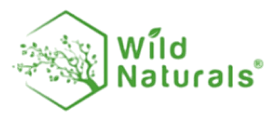

If you struggle with eczema, you know it can be one of the most difficult skin conditions to treat. It can flare up when you least expect it, symptoms are often obvious and uncomfortable, and there’s not actually a cure.
Eczema is an inflammation of the skin that can cause itchiness, bumps, and irritation. You can experience eczema on the body or the face, and the treatment differs based on where it’s happening. Here, we share a comprehensive guide on how to treat facial eczema, from what can trigger flare-ups to the ingredients you should incorporate into your beauty routine…
What Is Facial Eczema?
Facial eczema is the same condition as body eczema, only with the rash-like symptoms occurring above the neck. Your skin will become itchy, inflamed, dry, and red during a flare-up. Of course, when you have eczema on the face, it’ll be more noticeable than when it’s on your body — and it can be more tender. Inflammation in facial eczema is often very uncomfortable due to the location. It can be extremely painful as the facial skin is sensitive.
We know that the chronic condition — which, according to the National Eczema Foundation, affects over 31.6 million people in the U.S. — can be distressing. It can seem worse than an outbreak on the body due to the fact that it’s visible and a bit challenging to cover up.
To add to how pesky eczema can be to treat, there are actually three types (and, yes, all three can emerge on the face): atopic dermatitis, the most common variety that’s considered long-lasting or chronic; contact dermatitis, also known as allergic contact dermatitis, which occurs at the site of exposure (a poison ivy rash is an example) and calls for medical attention; and seborrheic dermatitis, which is triggered by oil buildup and mainly happens on your scalp, back, or chest (though it could be on the face). Typically, when people say “eczema,” they’re referring to atopic dermatitis — though treatment for all entails using gentle, calming products.
What Causes Eczema Flare-Ups?
A long list of factors can cause eczema to flare up. It could be anything that activates the immune system or anything you come in contact with. Among these triggers are food, the environment, weather, and, most commonly: stress. In fact, in a National Eczema Society landmark patient survey conducted in 2020, stress was identified as the single biggest trigger of eczema flare-ups. Interestingly enough, far more women (57%) were affected than men (41%).
The silver lining? Face flare-ups typically don’t last as long as ones on the body. They can still last a few weeks, but that time can be shortened with the help of proper treatment.
How To Treat Facial Eczema
Remember: There is no magical cure, but there is a myriad of remedies that range from topical steroids to light therapy facials. To start, it’s typically recommended to use over-the-counter hydrocortisone for itchiness. But if it doesn’t go away after a week, go see a dermatologist. (Doesn’t that seem backwards? It does to us too.)
Gentle Facials
If you want to see a pro for relief, you can benefit from the right kind of facial. For someone with facial eczema, we would suggest a noninvasive facial to moisturize and help with the outbreak. If you’re experiencing an active flare-up, the experts recommend weekly (and in some cases more frequent) facials until it subsides.
Generally, a combination of vitamin and oxygen therapy can provide some eczema relief, which you can receive at day spa’s or medi spas. Vitamin E combined with a bit of coconut oil to add hydration is a great natural alternative to try as well.
Red Light Therapy
Another popular treatment is phototherapy, also known as LED light therapy. Red light therapy is incredibly healing due to its ability to increase ATP production (aka cell repair) and boost fibroblast (collagen production) activity. The National Eczema Society reports that regular LED light treatments — done about two to three times per week — reduce inflammation levels, itching, and pain. It even helps speed recovery time and prevent chronic symptoms.
What To Avoid
In the midst of a flare-up, skip anything harsh, whether it’s a product or a treatment. Alcohol, fragrances, acids, retinoids, vitamin C, lanolin, and essential oils can all irritate and dry out your skin if you are prone to eczema. Microdermabrasion, peels, and micro needling are treatments to steer clear of if you’re dealing with eczema since they’re on the abrasive end of the spectrum.
Ingredients To Look For
For your skin care routine, seek hydration-based ingredients. These are the top six that topped our lists for natural hydration, nourishment, and repairing properties:
Ceramides: Ceramides are a favorite because they’re made naturally by the skin, but often, eczema-prone skin lacks them. This ingredient helps also soothe the skin.
Hyaluronic Acid: Hydrating staple hyaluronic acid is another solid choice since it’s a humectant that helps pull in extra moisture to the skin from the air.
Colloidal Oatmeal: In beauty products, this is comprised of antioxidants and anti-inflammatory plant chemicals to calm itchy skin.
Niacinamide: it helps strengthen the skin’s natural barrier, which is often compromised during an eczema flare-up.
Humectants: Humectants, like manuka honey, can also be good for barrier repair, hydration, collagen production, and is even anti-inflammatory and antibacterial! This one is top in our books. Glycerin is another option.
Natural Botanical Oils: Plant-based oils, like jojoba, coconut, and carrot seed oil, will deeply penetrate the skin to help relieve dryness.
Remember that finding what your skin responds best to is a trial and error process. Every person’s skin is different. Always patch test before trying a new product. To help, Wild Naturals is a natural, fragrance-free, and eczema-specific made skin care line from the natural skin care pros that could help heal persistent outbreaks and get your skin back on track! Shop now.


